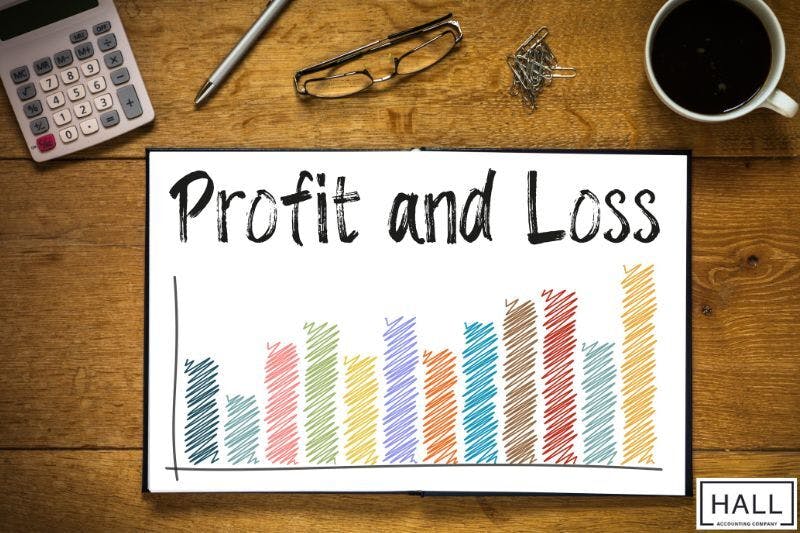
In accounting, allocating the costs associated with the product you sell to operating expenses, is the incorrect way of dealing with these costs. Costs of Goods Sold (CoGS) affects the gross profit calculation in the income statement and for this reason, it is recorded separately.
This way of recording CoGS allows a business to clearly understand how much it costs to produce a product and work out the correct pricing.
In this article, we discuss the difference between CoGS and other operating expenses and show you how to accurately record it. We also discuss what you can learn about your business from monitoring CoGS.
How is CoGS different from other operating expenses?
CoGS are the direct costs incurred in the production of goods sold by a company. These include direct material costs, direct labor costs, and direct overhead costs. They can be distinguished from other operating expenses in that they are directly related to production, whereas other operating costs can be a result of business activities that are unrelated to the production of goods, e.g. office supplies, advertising expenses, administrative expenses, and legal expenses.
Cost of goods sold expenses
There are a number of direct expenses that can be included in the CoGS calculation.
DIRECT MATERIALS | |
Raw materials | The basic materials used to manufacture a product, such as wood for furniture, fabric for clothing, steel for gutters, and glass for windows. |
Component parts | Parts that are incorporated into the final product, such as electronic components for gadgets, or tires for vehicles. |
DIRECT LABOR | |
Wages for production workers | Salaries and wages paid to employees directly involved in the manufacturing or assembly process. |
Contractor payments | Payments to contractors directly involved in the manufacturing process. |
MANUFACTURING SUPPLIES | |
Consumable supplies | Items like glue, nails, screws, or welding materials that are used up in the production process. |
DIRECT OVERHEAD COSTS | |
Utilities for the production facility | The electricity, water, and gas used during the production process |
Depreciation of production equipment | The allocation of the cost of production machinery and equipment over its useful life. |
Rental of machinery and equipment | The rental costs associated with machinery or equipment directly used in the production process |
Maintenance and repairs | Direct cost incurred to maintain or repair equipment involved in the manufacture of the product. |
SHIPPING EXPENSES AND FREIGHT COSTS | |
Inbound freight costs | Costs associated with transporting raw materials or components from suppliers to the production facility. |
Outbound freight costs | Costs of shipping finished goods to customers if included in the price of goods sold. |
PACKAGING COSTS | |
Primary packaging | The packaging that is necessary to hold and protect the product, such as bottles, boxes, or wrapping materials. |
Operational expenses (OpEx)

The costs incurred in the running of day-to-day operations are called operating expenses, operational costs, or indirect expenses. These expenses will not be directly related to the production of goods, but are necessary for the business to function.
Common operating costs can include:
Rent or lease payments
Utilities - not directly attributable to the manufacture of the product
Employee salaries of administrative, managerial, sales, finance, and marketing staff
Office Supplies
Marketing and advertising related to the business
Insurance
Depreciation
Legal fees
Travel and Entertainment
Technology and software
It now becomes easy to understand why the cost of goods sold is not classified as an operational expense in accounting practice.
Why is the accurate recording of COGS important?

The accurate recording of CoGS is vital for a number of reasons, all of which have implications for the financial health of your business. Here are some key reasons for correctly recording CoGS.
An accurate profit calculation
The cost of goods sold is subtracted from your total revenue to get a gross profit figure. This figure represents the true cost of producing the goods that you sell, and how much profit you make from selling these goods.
By way of example, let’s assume that you have $400,000 total revenue for 2023. You include raw materials, component parts, and freight costs in your CoGS calculation, but you incorrectly record production utilities, rental, and packaging as operational expenses. The CoGs total to $100,000.
Revenue | $400,000 |
Cost of Goods Sold | $100,000 |
Gross Profit | $300,000 |
Calculating your gross profit margin from these figures would look like this:
Gross Profit Margin = ($400,000$300,000) × 100 = 75%
At this point, things are looking really good. A high gross profit margin of 75% indicates that your production costs are relatively low compared to your sales revenue, which is positive.
Based on these numbers you decide that there is room to reduce your product pricing so that you can be more competitive. But there’s a problem, $200,000 has been incorrectly allocated to operating expenses instead of CoGS. Let’s re-look the numbers.
Revenue | $400,000 |
Cost of Goods Sold | $300,000 |
Gross Profit | $100,000 |
Gross Profit Margin = ($400,000$100,000) × 100 = 25%
With the correct allocation of expenses incurred, the true profit margin is 25%. With a much lower gross profit margin, you would not lower the price of your product. This basic example shows how the incorrect recording of financial transactions can cause you to make decisions that will have serious consequences in the next financial period.
Using the above example, we can now examine other areas that would be affected by CoGS.
Don’t let errors like this happen to you if you're a small business owner. Hall Accounting Company will do your day-to-day bookkeeping, allocate financial transactions to the correct G/L accounts, and generate accurate financial statements. Speak to us today about what you need.
Practical examples: How accurate recording of CoGS affects business decisions
The best way to illustrate the business decisions that are affected by CoGS is to provide practical examples.
Manufacturing industry: Precision Electronics Inc.
Precision Electronics Inc. manufactures electronic components for various industries. The company has detailed records of COGS, including raw materials, direct labor, and manufacturing overhead.
The company is considering whether to introduce a new line of advanced microchips. To find out if this is possible, they examine their current financial situation.
Raw materials: $500,000
Direct labor: $200,000
Manufacturing overhead: $150,000
Total COGS: $850,000
Business Pricing Strategy:
Senior management uses COGS to determine the pricing of the new microchips. By forecasting the total cost of production, they work out a price that would allow them to enter competitively into the market. Their desired gross profit margin is 40%. By setting the required selling price at $1,416,667 the company ensures they cover their production costs and achieve their desired profit margin, making the new product line a viable option.
Retail Industry: Trendy Apparel Store

Trendy Apparel Store is a retail chain specializing in high-end fashion items. The store tracks COGS meticulously to manage its inventory and pricing.
Purchase cost of goods: $100,000
Inbound freight costs: $10,000
Total COGS: $110,000
Business Pricing Strategy:
Using the COGS figures, the store decides to discount some of the items in a sale. They mark-down slow moving items by 50%, and receive an excellent response increasing their revenue by $250,000.
Service-Based Industry: Elite Marketing Agency
Elite Marketing Agency provides digital marketing services. The agency uses COGS to evaluate project costs and profitability. The agency is bidding for a large contract to manage a client’s digital marketing campaign for a year.
Salaries of project-specific staff: $80,000
Software and tools: $20,000
Outsourced content creation: $10,000
Total COGS: $110,000
Business Pricing Strategy:
The agency uses COGS to determine the minimum price for the contract to ensure profitability. Their desired profit margin was 30%, and after calculating the minimum contract price of $157,143, they decided to set the bidding price at $160,000. This covered all project-specific costs and achieved their desired profit margin.
These examples clearly demonstrate the important business decisions that are made by correctly allocating expenses to COGS, instead of day-to-day operating expenses.
Frequently Asked Questions
What is the difference between CoGS and cost of sales?
Cost of Sales (COS) encompasses all costs directly associated with the production of goods or services sold by a company. It is a much broader term than COGS and is also used by companies that offer services.
In service businesses, it includes not just direct costs but also a wide range of operating expenses that can be attributed directly to the provision of the service. These expenses may be termed direct expenses and indirect expenses. Just like COGS, cost of sales is NOT classified as an operating expense according to GAAP.
Is CoGS a debit or a credit?
Cost of goods sold is a debit in the general ledger because it increases the expense that reflects inventory costs. COGS is also classified as an expense account according to GAAP because it reduces the value of inventory.
Can CoGs be considered an operating expense for any type of business?
No, CoGs are not considered an operating expense for any kind of business. GAAP and IFRS mandate the separation of CoGS from operating expenses. These standards require that there is a clear distinction between direct production costs and general business expenses to ensure transparency and consistency in financial reporting.
How does the separation of CoGS and operating expenses affect tax reporting?
The separation of CoGS and operating expenses affects tax reporting by ensuring that businesses accurately report deductible expenses and calculate taxable income. CoGS directly reduces gross income, impacting gross profit, while operating expenses reduce operating profit. Proper classification ensures compliance with tax regulations and prevents errors in tax filings, which could result in penalties or audits.
Don’t let tax compliance slow you down. Let us handle the complexities of tax regulations for you. Call now to ensure peace of mind and focus on what really matters—your business’s growth.
Final Thoughts
There are some very important reasons for correctly allocating direct production costs to COGS.
Not only does it meet the required accounting practices and standards as prescribed by GAAP and IFRS, but it also gives you critical financial information that you need to manage your pricing strategy, costs, profitability, and tax liability.
Accurate CoG recording is not just an accounting requirement - it’s a powerful tool for important business conversations with your managers, investors, and shareholders.
Stay on top of your finances, and let us handle the rest. Your business deserves nothing less than precision and clarity in financial reporting. Here's to your success!